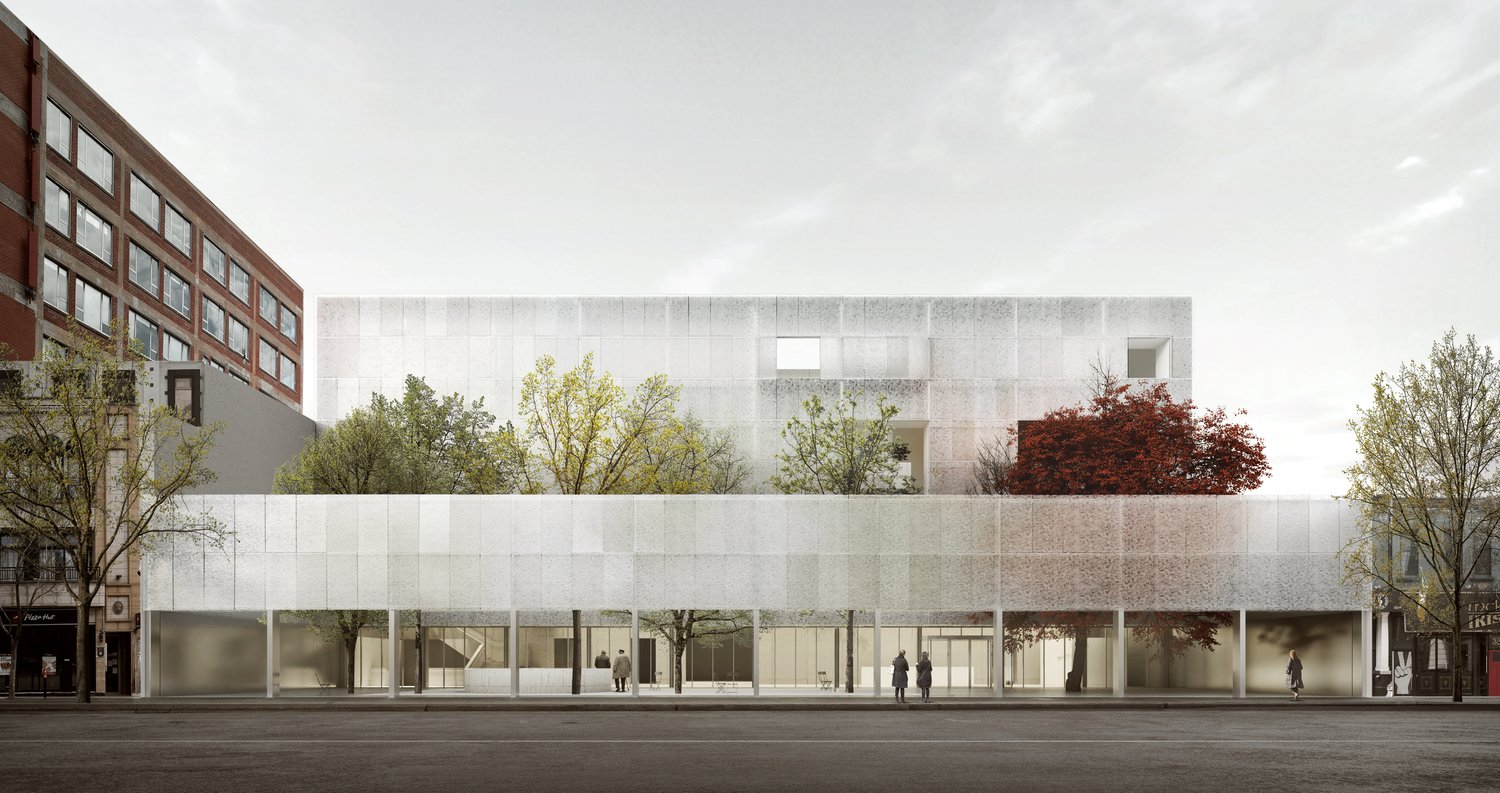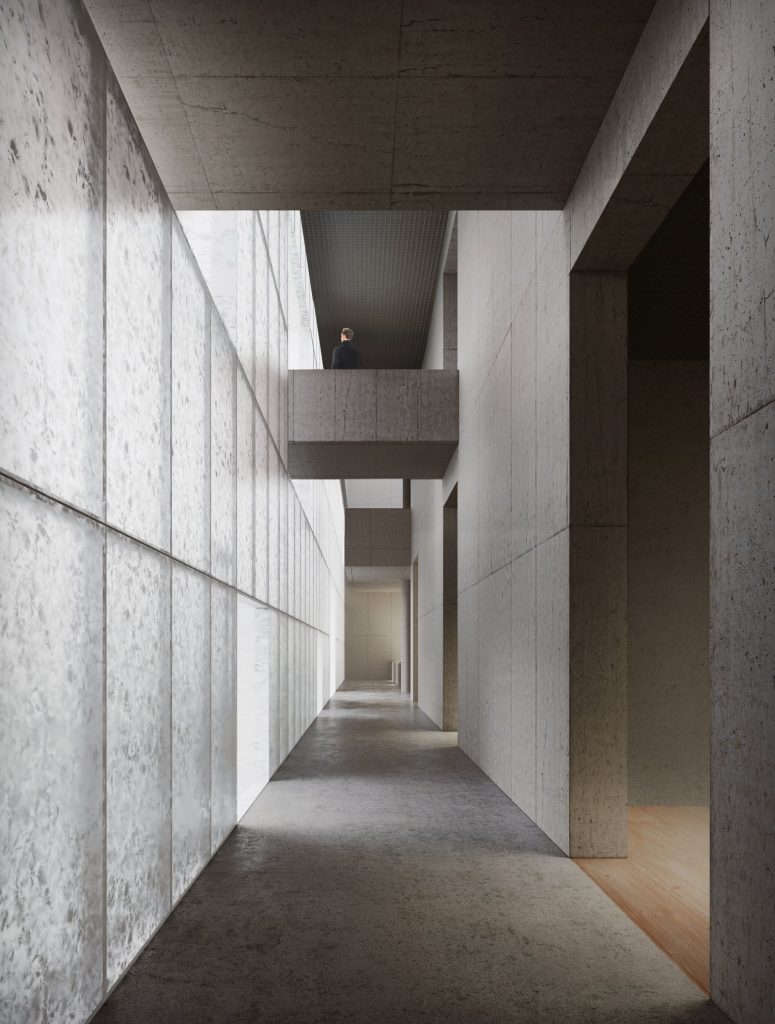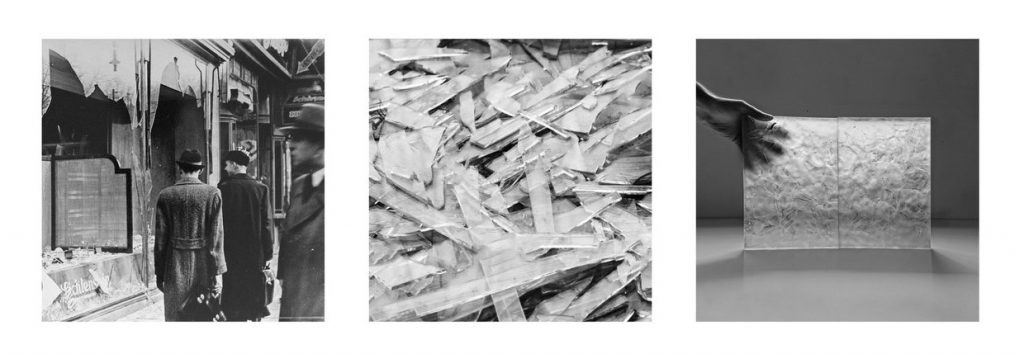Asst. Prof. Piper Bernbaum on Montreal Holocaust Museum competition finalist team
October 5, 2022
Assistant Professor Piper Bernbaum was part of a design team with Pelletier de Fontenay + NEUF Architect(e)s that was shortlisted in an international architectural competition for the new Montreal Holocaust Museum.
The team was among four finalists selected by the jury out of 32 proposals from nine countries.
“It was an international competition with a budget of almost $30-million, so it is an honour to make it through to the last phase of the work,” says Bernbaum, who worked on the project from December 2021 to July 2022.
“It was an incredibly meaningful journey to think about how to build a place for Holocaust education, to consider what it means to make a building that acts as a memorial, and to challenge ourselves in proposing a space that can contribute positively to the future generations of Jewish communities in Montreal.”
The finalists each received $125,000 from the museum to further develop their projects in Phase 2 of the competition. The other three finalists were KPMB Architects + Daoust Lestage Lizotte Stecker, Atelier TAG et L’OEUF architectes en consortium, and Saucier+Perrotte Architectes.

Last July, after presentations by the four shortlisted groups, the nine-member jury selected the project by KPMB Architects + Daoust Lestage Lizotte Stecker as the winner.
The museum had invited architects to address the important issues of places dedicated to Holocaust remembrance and the education of future generations about the universal risks of racism, antisemitism, hatred, and indifference.
The entry by Pelletier de Fontenay + NEUF Architect(e)s is titled חַי, which translates from Hebrew as “the living” or “to life” and is pronounced Chai. It offers a civic space of openness for education, storytelling, and reflection.
Bernbaum served as a design consultant and engaged in design conception and feedback.
“We did workshop charettes as a team where we all worked together to talk through the design ambitions and symbolism,” she says. “I also offered feedback and information on Holocaust history, Jewish spatial practices, and cultural practices.”
Bernbaum sought to ground the design work in the needs and values of the Jewish community and support the design of a conscious and careful building that engaged carefully and thoughtfully with Holocaust history, she says.
“A challenge for a building such as this is how to commemorate and engage with such a horrific history while simultaneously designing a building that can contribute to the contemporary city and be a place of belonging,” she says. “The building needed to serve the community of the past and the present and offer an experience that moved the visitor.”


She describes a productive, caring, and collaborative environment. “The team was an incredible group of dedicated designers, very open and engaged in listening, working as a studio, and giving space to all voices and thoughts around the table,” she recalls.
“The team invested themselves fully into the work, engaged in learning about Holocaust history and the Jewish community of Montreal to build an aware and appropriate design response, and fought to build an eloquent and engaging building for the city.”
Bernbaum was invited to join the team by Louis-Charles Lasnier, a graphic design professor at UQAM in Montreal.
They had worked together on The Evidence Room, (Robert Jan van Pelt, Anne Bordeleau, Donald McKay, Sascha Hastings), an installation that reconstructs key objects used in the forensic analysis of the architecture of Auschwitz. The Evidence Room was the University of Waterloo’s submission to the 2016 Venice Architecture Biennale.

Bernbaum was the exhibition’s project manager. Working on the Montreal Holocaust Museum is an extension of her research and teaching interests.
“I have engaged in projects related to the history of the Holocaust since working with Dr. Robert Jan van Pelt, an internationally recognized authority on the history of Auschwitz, at the University of Waterloo as a research assistant and for my thesis,” she says.
“The work ties itself closely into my research on the spatial practices of Jewish culture, as well as my research and teaching interests in the ethical responsibilities of the architect, and the complicated and often fraught intersections of law and architecture.”
The new museum is to open in September 2025 on Saint-Laurent Boulevard in downtown Montreal.
Project Team
Architects: Pelletier de Fontenay + NEUF architectes
Images: Giorgio Notari / Pelletier de Fontenay
Consultant for architecture: Piper Bernbaum
Consultant for museology: Louis-Charles Lasnier
Consultant for scenography: Go Multimédia
Consultant for lighting: Light Factor
Consultant for acoustics: Soft dB
Landscape Architects: WAA
Structural Engineer: Latéral Conseil
Mechanical Engineer: Dupras Ledoux
Project Text
Titled חַי (pronounced Chai, literally translated from Hebrew as “the living” or “to life”), the project is a space for education, storytelling, and reflection for the community. In order to honour the lives lost during the Holocaust, this proposal seeks to reach out to the living. Mourning the past, understanding tragedy and violence, but also working to strengthen the ties between Jewish and non-Jewish communities in Montreal. The project is meant to be both a museum of memory and mourning and a community building that makes room for the vibrant minds of those who cannot be here, as well as those who are.